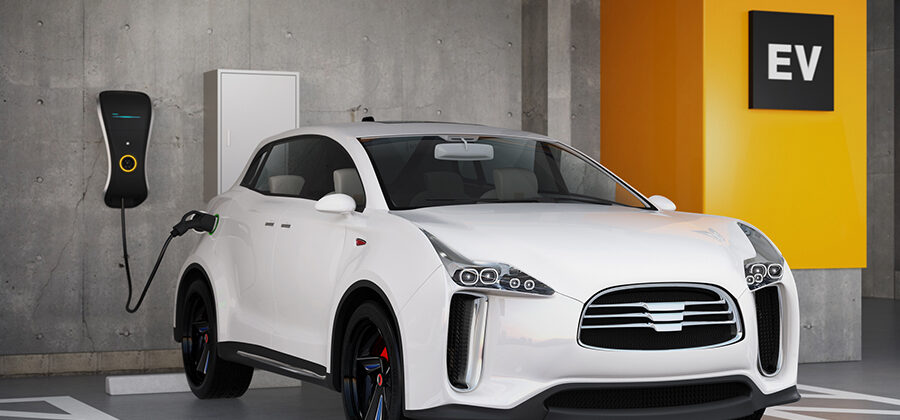EV Battery Testing and Electric Performance Testing Equipment
February 27, 2023 | Topics: Battery Test, EV Battery, Sustainable Energy
According to Market Watch, electric vehicle (EV) sales in the United States have exploded, with roughly 1.6 million EVs sold last year alone. That figure represents a 60% increase from 2022. Unsurprisingly, this sharp rise in demand has increased the need for auxiliary equipment, including EV battery testing solutions. After all, the electrical vehicle battery is the single most important part of rechargeable cars.
A high-performance battery pack offers better performance and increased range, both of which are critical factors for those considering rechargeable automobiles. This blog explores the electric vehicle automotive space and the role of battery testers in optimizing energy storage, maximizing the lifecycle of each battery cell, and ensuring customer satisfaction.
Ready to Get Started? Request a Quote
Electrical Performance Testing of EV Batteries
Most EV battery packs use lithium-ion batteries. The manufacturing process of these battery technologies involves several critical stages, from electrode preparation and cell assembly to electrolyte filling and sealing. Each stage significantly impacts battery safety, lifespan, and performance.
During performance testing, manufacturers ensure that the battery supplies and battery software are working as intended to provide adequate longevity and power output. Through EV battery testing, designers can identify defects and make modifications to optimize battery performance.
EV battery testing equipment is designed to measure multiple facets of performance, including capacity, voltage, and impedance. Cumulatively, these variables provide insights into the durability and viability of an electric car’s power source. Environmental testing also mimics conditions such as cold or hot temperatures and heavy usage.
These tests simulate real-world usage scenarios, including different charging and discharging cycles, temperatures, humidity, altitude and rates, to mimic the battery modules’ operational environment. Designers will perform vibration testing as well to promote safety.
Safety testing represents a huge part of testing standards, as improper configurations or excessively high voltage may result in fires or other dangerous conditions. If you are involved in testing services for your organization, it’s vital that you choose the right EV battery testing equipment. When selecting EV battery testing equipment, consider variables such as:
- Accuracy and Precision: Instrument measurements must be highly accurate and repeatable
- Range and Scalability: Equipment should be able to handle many voltages, currents, and power levels
- Integration Capabilities: Integration with energy storage systems, apps, and other testing equipment is crucial
- Safety Features: Instruments must have safety features to protect personnel from hazards
Selecting appropriately sized and capable EV battery testing instrumentation is critical for accurately assessing EV battery performance and ensuring reliability. Verifying the performance of your battery management system and power cells will allow you to better serve your clients.
EV Battery Manufacturing Process
Most electric vehicle battery manufacturers use lithium-ion due to its high energy density. These batteries also allow the vehicle to extract energy rapidly during acceleration. Here are the key parts of designing the powerhouses for rechargeable automobiles:
- Cell Production: Involves creating the battery’s basic unit, where chemical reactions occur
- Module Assembly: Cells are then grouped into modules that shape the battery’s architecture
- Pack Integration: Modules are combined into packs before adding necessary electronics and cooling systems to prepare the battery for installation
Quality control and testing are paramount at each stage of the manufacturing process, as all workflows are incredibly complex. Designers must conduct rigorous testing of individual cells, modules, and the final pack to assess their capacity, energy efficiency, charge/discharge rates, and thermal stability.
Early in the production workflow, QC measures detect defects and inconsistencies, preventing potential failures that could endanger users. Taking a meticulous approach to testing and quality assurance also guards against issues that may compromise performance or damage the manufacturer’s reputation.
When you’re setting up your own quality control workflows, make sure to identify pass/fail thresholds and defect tolerances. There are bound to be a few challenges during power cell production. The key is to detect and minimize them.

Figure 1. An overview of the Li-Ion battery manufacturing process
EV Battery Test Methods
During EV battery testing, you have two primary goals: gauging performance and ensuring safety. By far, the most common and important measurement is the discharge and charge testing.
As the name suggests, charge testing determines how quickly a cell or module can recharge after being depleted. Conversely, discharging measures a module’s capacity to power an electric car, which has a direct impact on the vehicle’s range.
You should also perform an electrochemical dynamic response test, which measures a battery’s state of health (SoH). While this method is more complex, it also provides valuable information about the battery’s overall health. Some other essential methods include:
- Capacity Testing: Gauges a cell or module’s ability to store and deliver energy
- Voltage Testing: Tests the device’s ability to maintain operational voltage under different load conditions
- Impedance Testing: Measures internal resistance, which affects charging and power delivery
As you look beyond performance, it’s important to use specialized testing methods to assess safety and durability. Accelerated aging tests simulate the battery’s lifespan by subjecting it to repeated charge and discharge cycles, high temperatures, and voltage loads to gauge its response.
During environment testing, you’ll expose the modules to extreme conditions, such as high and low temperatures, humidity, and vibration. People drive rechargeable cars in a wide range of environments, which is why these types of evaluations are so critical. You must ensure that your modules can withstand diverse conditions while still delivering adequate performance.
Abuse testing represents one of the most important quality assurance procedures. During these evaluations, you will gauge the module’s response to potential misuse scenarios like overcharging, penetration, or short-circuiting.
Cumulatively, these comprehensive tests simulate real-world conditions as closely as possible, providing you with valuable data on how the modules will hold up throughout their operational lives. By rigorously assessing power packs against a wide range of parameters, you can identify potential weaknesses, ensure compliance with safety standards like ISO, and enhance electric cars’ reliability.
Selecting Properly Sized Power Instrumentation
You should consider several key factors when selecting power instrumentation for your testing protocols. The instrument must accommodate high voltages and currents in line with existing trends in the electric car space. Currently, most power packs operate between 200 and 800 volts, with newer models operating at a higher range of 400 to 800 volts.
At a minimum, your instruments should be capable of producing 800 volts of power. However, you may want to invest in equipment with greater output capabilities, as future vehicles may use higher voltages. You’ll also need to verify that your instruments’ power levels align with those of typical electric vehicle batteries. Most batteries operate at power ranges between 15 kWh and 100 kWh.
After considering your instrument’s basic output requirements, you should ensure that the devices can facilitate accurate and reliable testing outcomes. More sensitive instruments can detect even subtle nuances of performance, ensuring that your products meet stringent specifications. Highly accurate readings help precisely measure health and performance.
In terms of instrument type, there are several options available to you. Battery cyclers facilitate charging and discharging, which in turn simulates real-world usage patterns. DC power supplies provide stable power for basic functionality tests and conditioning. Electronic loads mimic the battery’s load in an electric car, allowing you to evaluate how the pack behaves under specific conditions.
Finally, ensure that your instruments are scalable and flexible. Battery technologies are evolving rapidly, and instruments that offer modularity can easily be upgraded to align with the latest tech.
An Alternate Solution
Recently, manufacturers have explored alternatives to traditional testing, such as virtual options and predictive modeling. This method involves creating a virtual version of the battery and using models and algorithms to predict how it will likely perform under certain conditions.
The virtual approach offers several benefits, including reduced costs, increased efficiency, and additional insights into performance. However, there are some drawbacks to modeling and virtual testing as well. For instance, it has a greater margin for error and lacks real-world data.
Models leverage complex mathematical equations. Even a seemingly small error in your model could lead to extremely skewed results. Therefore, it’s best to use a combination of virtual and real-world testing.
During the early stages of power pack design, use models to predict performance and optimize your architecture. Then, create a prototype and run traditional tests to ensure your product functions as expected.
Another alternative test solution to a power supply and an electronic load is a single instrument, a bidirectional DC power supply. A bidirectional DC power supply is a two-quadrant instrument that can both source and sink current. As a power supply, the dc power supply sources current and can charge a battery. As a load, the bidirectional power supply can sink current and act as a load for the battery. Figure 5 shows the single instrument solution for battery charge and discharge testing. This eliminates the need for protecting the power supply from reverse current with additional circuitry due to the seamless transition from source to sink.
 Figure 2. Use of a bi-directional power supply to both charge and discharge a battery
Figure 2. Use of a bi-directional power supply to both charge and discharge a batterySource for Solutions to EV Battery Testing
EA Elektro-Automatik offers bidirectional power supplies that are ideal for EV battery testing. See EA-PUB 10000 6U – EA Elektro-Automatik (eapowered.com) and Bidirectional DC Power Supply | EA Elektro-Automatik (eapowered.com). Valuable features include:
- A true autoranging output characteristic to accommodate increased load current draw as battery voltage declines
- A built-in function generator that can generate load pulses for the electrochemical dynamic response test
- 60 kW power capacity in a single 6U, full rack enclosure. No other power instrument manufacturer can pack as much power in as small a package. Up to 60 kW, a single instrument can provide a complete solution for charging and discharging.
- Paralleling of multiple instruments with a Master-Auxiliary bus to simplify interconnection and control and a Share-Bus™ interface to ensure all instruments equally share the source or the load.
- Regenerative energy recovery for returning absorbed energy to the grid with 96% efficiency
- Automated test with a wide range of interfaces for connection to a PC or a PLC
These versatile devices enable you to push the limits of your cells and uncover flaws that may impact performance or reliability. When you want to give your customers the very best, test your products with genuine EA equipment.
Order Your EV Battery Testing Equipment Today
Are you ready to order high-quality EV battery testing solutions? If so, we invite you to request a quote from our team. If you’d like to see our equipment in action, schedule an online demo. Our testing experts will help you select the devices and apps necessary for your intended use case.

